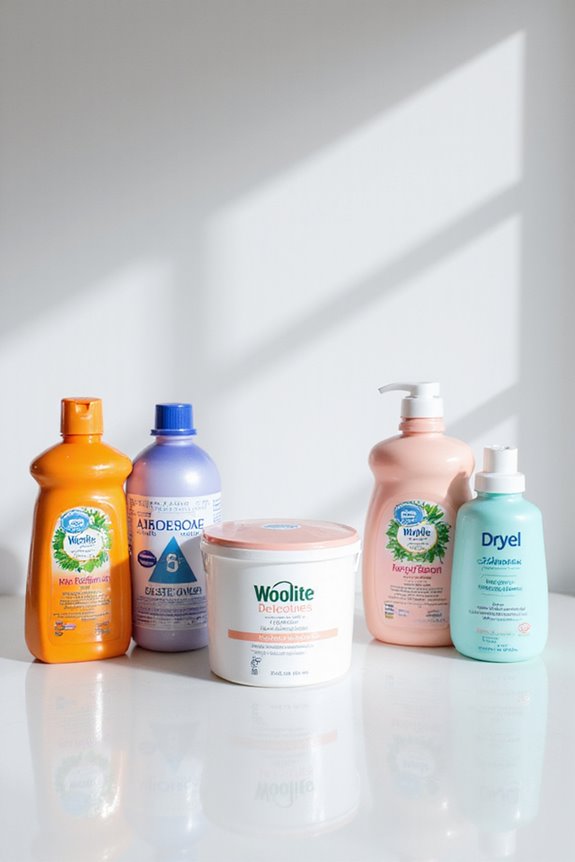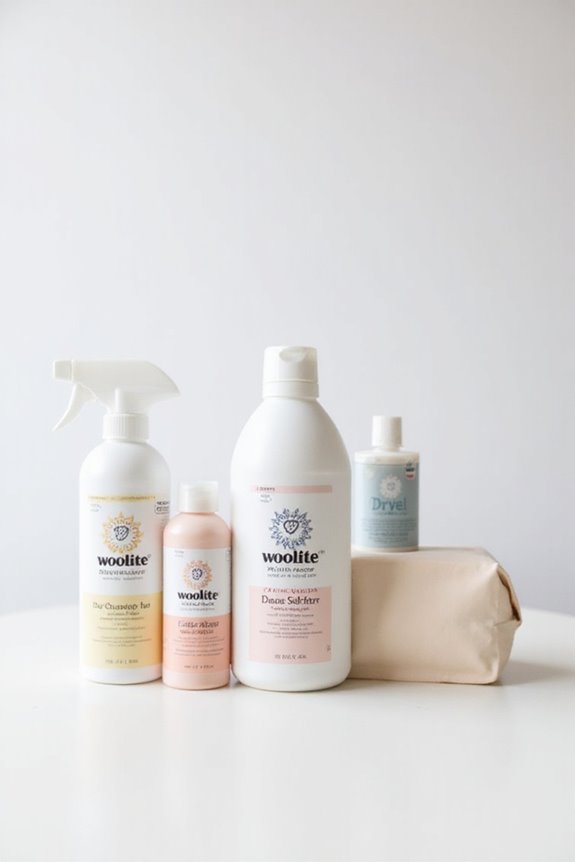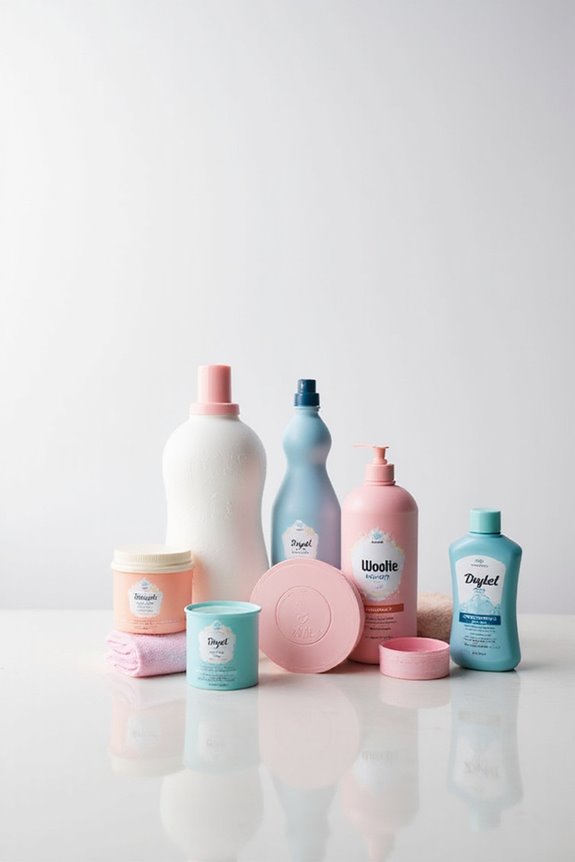Yes, we can absolutely machine wash our clothes with Woolite! It’s designed for delicate fabrics and does a great job protecting them. We should select the right cycle, like delicate or wool, and use cold or lukewarm water to keep our garments safe. Plus, Woolite is gentle and hypoallergenic, perfect for sensitive skin. I’ve found it really helps keep colors vibrant! Want to know more about how to get the best results with Woolite?
Key Takeaways
- Yes, you can machine wash with Woolite, as it is designed for various fabric types including delicates and wool.
- Use the delicate or normal washing cycle, and select cold or lukewarm water for optimal care.
- Always load garments loosely to ensure proper water circulation and avoid damage.
- Wash wool items separately and consider using a fine mesh laundry bag for added protection.
- Follow care label instructions and do not exceed 30˚C (86˚F) to prevent felting of wool garments.
Understanding Woolite and Its Formulations
When it comes to washing our clothes, especially the delicate ones, we often wonder what products are best. Woolite formulations are designed specifically for various fabric types, ensuring our garments stay in great shape. For instance, Woolite Delicates prevents shape loss and fiber damage, while Woolite Darks Defense protects our dark clothes from fading.
Each product contains gentle surfactants that effectively lift dirt without being harsh on our fabrics. We’ve all seen what happens when clothes shrink or stretch, right? Woolite helps to avoid those mishaps. Plus, it’s suitable for sensitive skin, making it a go-to for baby clothes too. So, whether it’s silk or polyester, we can trust Woolite to keep our clothes looking like new. Additionally, Woolite products are specifically formulated to protect against fading, ensuring that our favorite garments maintain their vibrant colors for longer.
Machine Washing Settings for Woolite
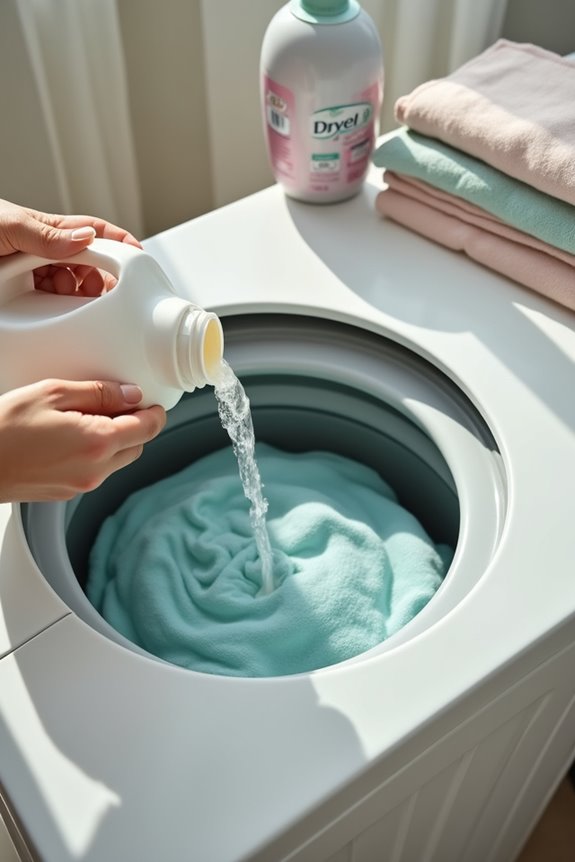
To get the best results when using Woolite in our washing machines, we need to pay attention to the settings we choose. First, we should select the right washing cycle based on the fabric type. If we’re washing delicate items, let’s go for the wool or delicate cycles. For sturdier fabrics, a normal cycle works just fine.
Also, let’s remember to follow the water temperature guidelines on the labels. Cold or lukewarm water is best for wool and delicate items, while hot water can be used for cotton if the label permits. Finally, we should load our garments loosely to guarantee proper water circulation, and always separate delicate fabrics from heavier ones to avoid damage. Happy washing!
Benefits of Using Woolite for Fabric Care
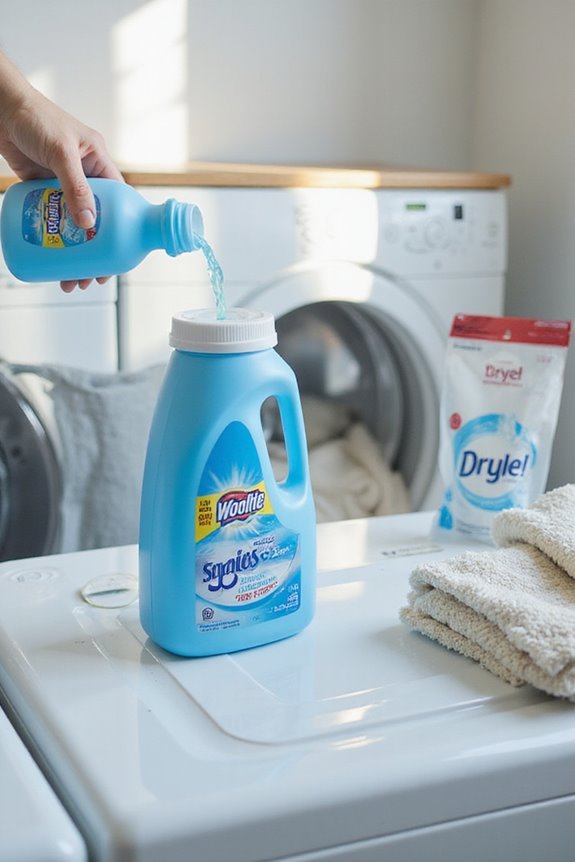
Using Woolite for our laundry can really make a difference in how our clothes look and feel. This gentle detergent is perfect for delicate fabrics, ensuring fabric longevity while effectively tackling stains. We’ve all had that moment when a favorite shirt gets a stubborn mark; Woolite’s stain removal power helps keep our clothes looking fresh. Plus, it works well even in cold water, which is a win for both our garments and energy bills. We can also appreciate how it protects colors, preventing fading and maintaining vibrancy. With its softening properties, our clothes feel great against our skin. Additionally, Woolite’s hypoallergenic formula is designed for delicate fabrics, making it suitable for those with sensitive skin. So, why not make the switch? Our laundry—and our wardrobe—will thank us!
Special Considerations for Wool Garments
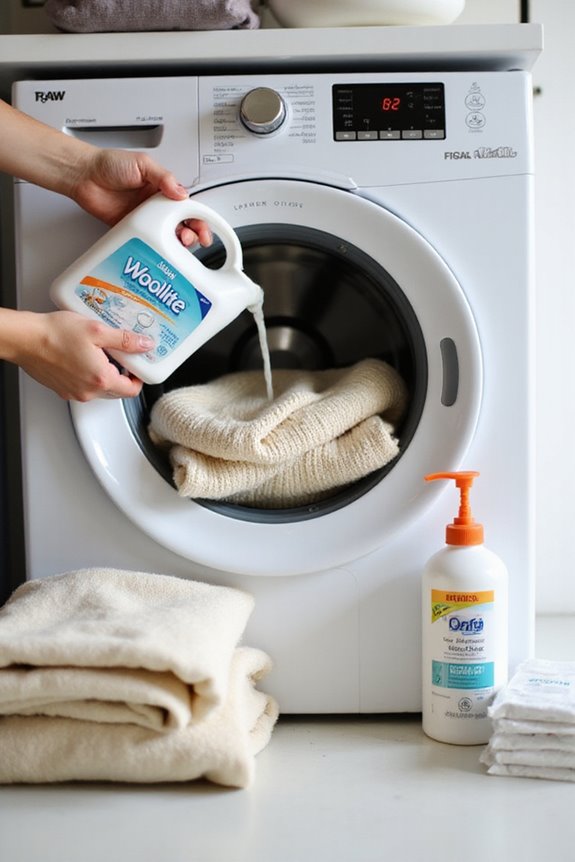
Caring for our wool garments requires a bit more attention than our everyday laundry. To guarantee proper wool garment care, we should always use a delicate or wool cycle with cold or lukewarm water. This helps prevent shrinkage and distortion. It’s also essential not to overload the machine; wool items should wash separately from other fabrics to avoid friction. Placing our wool garments in a fine mesh laundry bag can protect them during the wash. Before we toss them in, let’s remember to turn them inside out and check the care labels. And for washing temperature, we shouldn’t exceed 30˚C (86˚F) to avoid felting. With these tips, our wool garments can stay looking great for longer! Additionally, using detergents specifically formulated for wool can help maintain the integrity of the fibers during washing.
Safety and Usage Instructions for Woolite
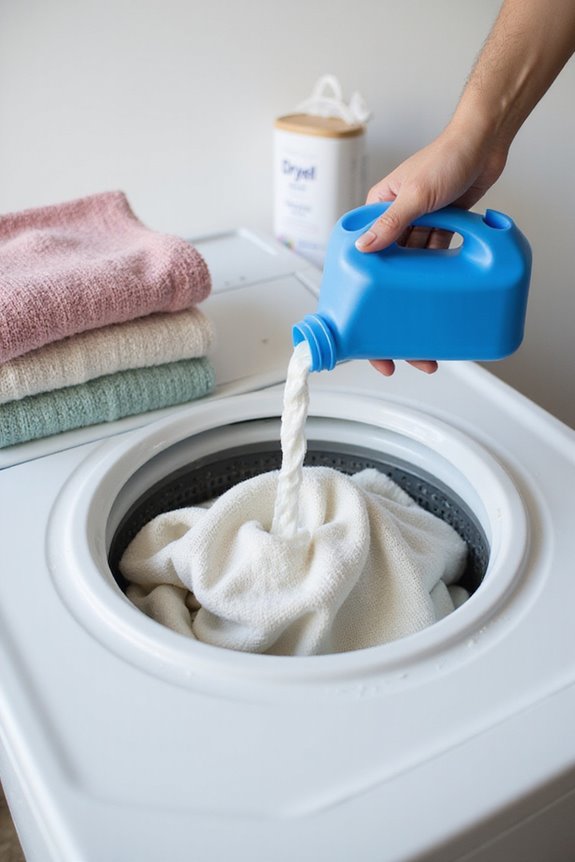
When we’re ready to wash our delicate wool garments with Woolite, it’s important to pay attention to a few key safety and usage instructions. First, let’s keep Woolite out of reach of children. We don’t want any accidental ingestions, right? Also, we should avoid eye contact because it can be an irritant. When using it, we need to follow the usage guidelines closely. For machine washes, select a gentle cycle and use cold water unless the label says otherwise. We should fill the machine with water first and then add Woolite. Finally, let’s remember to wash our hands after handling it to prevent skin irritation. Following these safety precautions will help keep our washing experience worry-free.
Best Practices for Machine Washing With Woolite
Now that we’ve covered the safety and usage instructions for Woolite, let’s talk about how to make the most of it in the washing machine. First, always choose the right washing cycle. If your machine has a wool cycle, use that; if not, go for a gentle or delicate cycle. This helps protect our clothes. When it comes to detergent dosage, we should use the Woolite measuring cap—fill it to line 1 for medium loads. Remember, less is more; too much detergent can lead to foaming messes. Let’s stick to cold or lukewarm water, especially for delicate fabrics. And don’t forget to turn our clothes inside out to keep them looking fresh and vibrant!
Tips for Maintaining Garment Quality After Washing
To keep our clothes looking great after washing, we should pay attention to how we handle them. First, let’s wash in cold or warm water to prevent fiber weakening and color fading. Choosing a gentle detergent, free from harsh chemicals, is key for fabric preservation. And remember, less is more—too much detergent can leave residue that stiffens our favorite shirts.
When drying, air drying is our best friend for garment longevity. If we need to use a dryer, let’s monitor it closely to prevent brittleness. For delicate items, we should lay them flat to maintain their shape. Additionally, using biodegradable options can effectively remove stains without damaging fabric. By following these simple tips, we can guarantee our clothes stay vibrant and last longer, making laundry day a little less intimidating!
Frequently Asked Questions
Can Woolite Be Used for Handwashing Clothes?
While we love the ease of machine washing, handwashing with Woolite showcases its effectiveness. By mastering handwashing techniques, we preserve our delicate fabrics, ensuring they stay vibrant and intact, giving them a longer life.
Is Woolite Safe for Sensitive Skin?
We recognize that Woolite offers benefits for sensitive skin, being dermatologically tested and free from harsh chemicals. However, some may still experience reactions, so it’s wise to test it on a small area first.
Does Woolite Work on Synthetic Fabrics?
When we consider Woolite effectiveness for synthetic fabric care, we find mixed opinions. While it claims to protect and clean, many experts recommend specialized washes instead, especially for maintaining performance in technical garments.
How Often Should I Use Woolite for My Laundry?
When it comes to laundry frequency, we should use Woolite every time we wash delicate or synthetic fabrics. Following these detergent guidelines helps maintain fabric integrity, softness, and color vibrancy while extending our garments’ lifespan.
Can I Mix Woolite With Other Detergents?
We shouldn’t mix Woolite with other detergents. Woolite compatibility is key for protecting delicate fabrics. Detergent mixing might harm our clothes, reducing effectiveness and risking fading or damage. Let’s stick to using Woolite alone!

